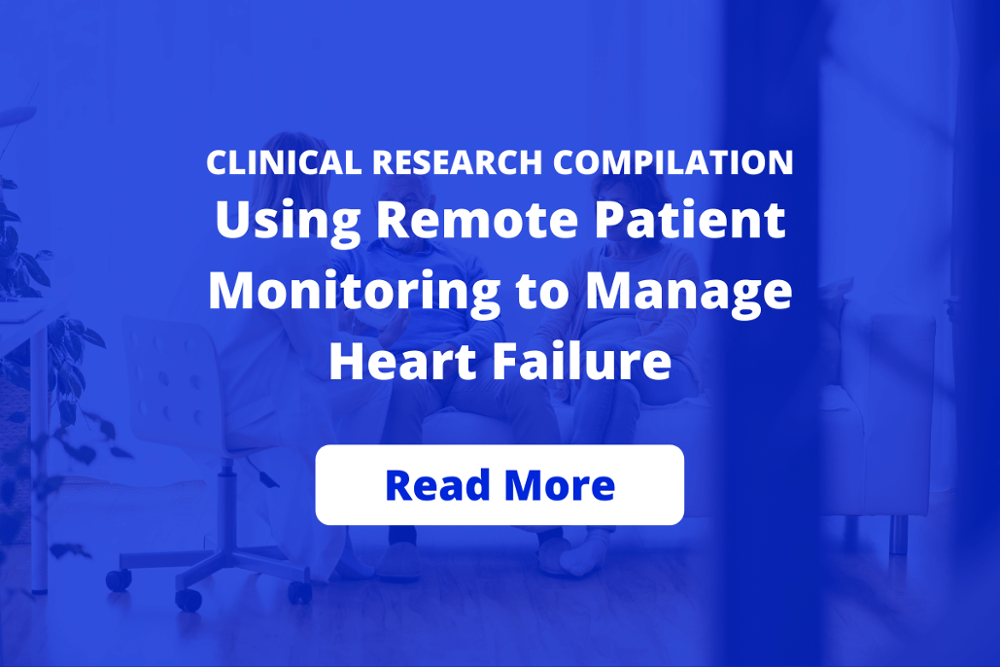August 12, 2022 •Optimize Health
Heart failure (HF) affects approximately 6.2 million people in the United States and has a 5-year mortality rate of approximately 42%. The 30-day heart failure hospital readmission rate is 23%. In many cases, these readmissions are caused by factors such as blood pressure increases that could be avoided if proactively managed.
Research Supports the Role of RPM in Reducing Hospitalizations and Mortality for Heart Failure Patients
Clinical research shows that remote patient monitoring can reduce hospitalizations, readmissions, and mortality for heart failure patients by enabling clinicians to intervene in a timely manner and proactively adjust treatment and/or medication at home. Blood pressure monitors can be used to monitor blood pressure. In addition, remote weight scales can be used to detect spikes in weight from fluid retention, an early sign of heart failure exacerbations.
Structured telephone support improved patient quality of life, self-care behaviors, heart failure knowledge, and overall satisfaction relative to patients without remote monitoring. Patients reported feeling more aware of their condition, more empowered to make appropriate lifestyle choices, and less anxiety.
We understand that healthcare providers need to direct their limited resources to programs that have been clinically proven to positively impact patient outcomes. That is why we compiled and synthesized a collection of 13 studies that scientifically demonstrate how RPM can help heart failure patients.
Highlights of the Research on RPM for Heart Failure Include
- The 30-day hospital readmission rate during a Mt Sinai hospital study was 10% for the RPM program, compared with an average of approximately 23%. Home telemonitoring reduced mortality (risk ratio = 0.64; 95% CI: 0.48-0.85) compared with usual care.
- About 70% of telemonitoring patients completed at least 80% of their possible daily readings. Our findings provide evidence of improved quality of life through improved self-care.
- Home telemonitoring interventions reduce the relative risk of all-cause mortality (0.60 to 0.85) and heart failure-related hospitalizations (0.64 to 0.86) compared with usual care.
- Structured telephone support (RR 0.80; 95% CI=0.63-1.00) and telemonitoring (RR 0.56; 95% CI=0.41-0.76) interventions reduced mortality. Structured telephone support interventions reduced heart failure-related hospitalizations (RR 0.81; 95% CI=0.67-0.99).
How to Use the RPM Heart Failure Research
Physicians and ordering providers rely on the results of clinical research studies every day to make patient care decisions. If you have an existing RPM program or are considering launching one, these studies can be used to:
- Educate physicians on the clinical benefits of RPM
- Justify the investment of staff time and practice resources into launching or maintaining an RPM program
- Improve RPM patient identification and onboarding based on patient populations that can benefit from RPM
Ready to Learn More
Clinical research has also demonstrated that RPM is effective for treating hypertension and diabetes. If you want to talk to an RPM expert about the clinical - and financial - benefits of RPM, please schedule a free consultation.
Share This: Back to Blog


